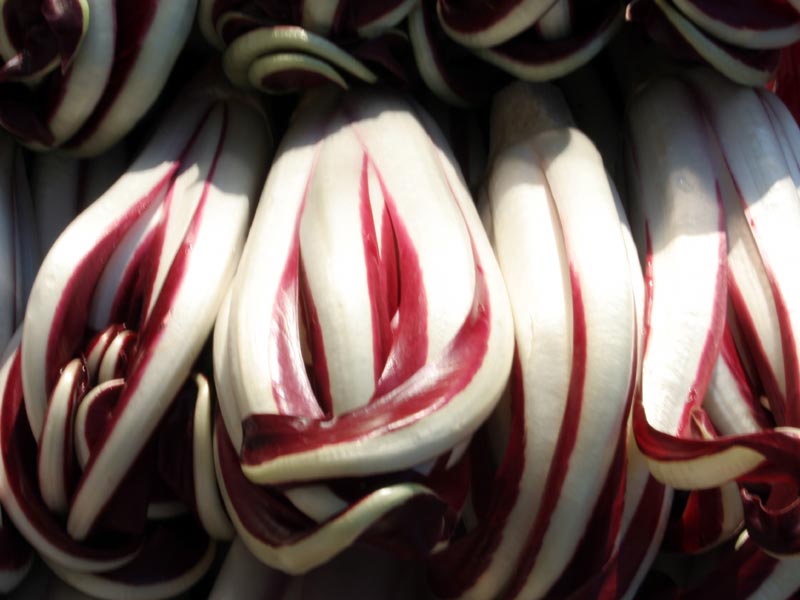The winter flower
According to some historians and experts like Giuseppe Maffioli, the credit of having transformed the winter chicory variety that has always characterized the countryside surrounding Treviso into the red and crunchy radicchio we know today, is to ascribe to the Belgian Francesco Van Den Borre. Expert in the planning of parks and gardens, he was invited in 1859 to Villa Palazzi-Taverna, at the northern border of the town of Preganziol, to plan its park, one of the most beautiful green areas annexed to the Venetian villa. He was also an expert in the blanching techniques used for the Belgian chicories, and it seems that he suggested the birth of the radicchio, although his son Aldo rejected this hypothesis. According to others, it was a chance discovery, fruit of the little secrets of the rural life.
Radicchio is the sum of refined varieties originating from the chicory spontaneous species, a dicotyledon of the Asteraceae family.
The progenitor of this plant, coming from Eurasia, used to grow in untilled and grassy areas. Over the centuries, the features of the species have changed for both spontaneous adaptation and research hybridization, until it has given origin to a series of varieties like Radicchio from Treviso, Radicchio from Castelfranco, Radicchio from Chioggia, Radicchio from Verona, and the Belgian chicory or Withloof.
Rich in healthy properties, linked in particular to blood depuration, radicchio is also rich in minerals like potassium, magnesium, phosphorous, calcium, sodium, manganese, and iron.
Its root has the same contents, together with the bitter principle of intibina associated with inulin. Vitamins of the group A, B 1, B2, C, and PP are also present.
Radicchio is known since ancient times for its depurative virtues, since not only it stimulates the appetite, but also activates digestion. Moreover, it has remineralization and anti-anaemia properties. Some authors ascribe it diuretic virtues, and it is particularly adequate in anaemia, asthenia, biliary insufficiency, and not serious hepatic disease cases.
A very common chicory, it has characterized for centuries the diet of the poor. Then – maybe already in the mid-16th century, even if the first written documents date back to the 19th century – the evolution of the cultivation techniques has transformed it into one of the most precious vegetables ripening in winter. The two varieties of PGI product - Precoce and Tardivo (the early and the late variety, respectively) – differ from the other kinds of chicory for their absolutely natural transformation process which was improved between 1860 and 1870 by the Belgian Francesco Van Den Borre, who lived in Treviso, combing the Belgian chicory blanching method with the local method to put into the manure, or in sand boxes, cardoons and celeries. After the first autumn frosts, the chicories are "forced" to form new leaves in the absence of light: almost without chlorophyll, they acquire the characteristic dark red color and become extremely crunchy. The tufts are then soaked into resurgence water for about 25 days and, afterwards, are put on sand strata to absorb all the water. When they are ripe, the damaged leaves are eliminated and a part of the tap-root is cut. Red radicchio from Treviso is not only characterized by its crunchiness, but also for its rather bitter but pleasant taste. Trade fairs and festivals dedicated to this famous vegetable are held, within the Park area, in Dosson di Casier, Preganziol, Casale sul Sile, Quinto di Treviso, and Treviso.
Radicchio, the most characteristic and renowned product of Treviso countryside, was born as if by magic from the cold winter characterizing the area. Between Treviso and Castelfranco, its main production areas, there is a green countryside scattered by important signs lefts by history and art along the upper course of the river Sile. [...]
Taken from the volume Fiori d'inverno (2005 - Biblos Edizioni)








